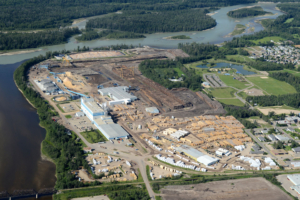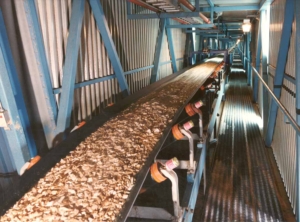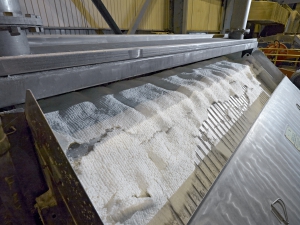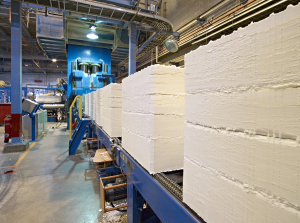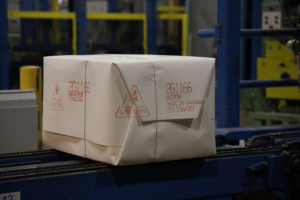Pride and Progress in Every Bale
Health and safety. When it comes to protecting the health of our employees, we have an exceptional record. But that’s never stopped our people from trying to do better. In the fall of 2021, we were honored to receive the AFPA President’s Award, recognizing the Whitecourt pulp mill as Alberta’s top safety performer, across all sectors of the industry, for the three-year period 2018-2020. Then, as 2021 came to a close, pulp mill staff marked a truly special milestone — operating an entire calendar year without a single recordable incident. That means 0 lost-time accidents and 0 medical treatments. But what it really means is that each one of our people returned home from work safe to their families, each and every day of the year.
Productivity and efficiency. When the Whitecourt pulp mill began production in 1988, it was built with a design capacity of 210,000 air-dried metric tonnes of BCTMP per year. Today, the mill produces 350,000 ADMT/year, thanks to prudent investments in plant upgrades and an effective program of continuous improvement. While ramping up production, the mill has significantly reduced its consumption of key inputs, with energy and water usage down 40% and 20%, respectively, over the past 15 years.
Quality and responsibility. Our pulp mill is certified to the ISO 9000 standard for quality management, the ISO 14001 standard for environmental management, and the PEFC (KPMG-PEFC-COC-2599-02) and Forest Stewardship Council® (FSC®) (FSC® C008999) chain-of-custody standards, all providing independent assurance of our commitment to product quality and consistency, and to the sustainability of our operations. The mill employs both an anaerobic effluent treatment and an extended-aeration activated-biomass effluent treatment system to clean process water to an exceptionally high standard of environmental quality. The anaerobic system produces a biogas used to generate renewable electricity and heat for pulp mill processes, displacing fossil fuels and reducing greenhouse gas emissions.

